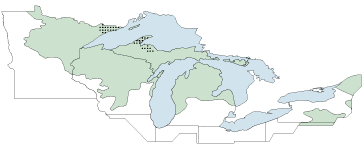|
Land Ecology Diversity of forest ecosystems contribute immensely to the prosperity and quality of life — cleaner air and water, and by reducing soil erosion. Economically, significant trees like quaking aspen, yellow birch, jack pine, red pine, and white pine may no longer be able to grow in the Great Lakes region because summers may become too warm. Other trees like black walnut and black cherry may eventually migrate northward into the region-given enough time. Productivity may ultimately increase, but only after a decline during the transition (a dieback phenomenon), as communities adjust to changing environment. Because managed land use accounts for as much as three-quarters of the land area of nature ecosystems more information is needed on both the impacts that current land management has on the ability of vegetation communities to respond and the how the dynamics of land use and management will interact with climate change. download Land Ecology workshop here Bird Migrations and Distributions
|
|
||||||||||



